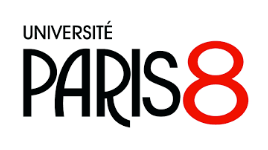17h00
Adam Schembri sera à distance.
UAR-CNRS Pouchet, salle 159, pour ceux qui souhaiteraient être en présentiel.
Lien Zoom: https://univ-paris8.zoom.us/j/94551225693?pwd=S243bHNFVFE2VXpWVkR1RjJhL0hlUT09
GESTURE VERSUS SIGN: MOVING BEYOND THE BINARY
ADAM SCHEMBRI
Department of English Language and Linguistics, University of Birmingham, UK
In this paper, I discuss the relationship between sign languages, gesture, and spoken language by reflecting on how proposed boundaries between ‘linguistic’ and ‘non-linguistic’ phenomena have been investigated in our respective fields. I agree with many other scholars that any notion of a binary ‘linguistic’ versus ‘non-linguistic’ distinction is problematic (cf., Goldin-Meadow & Brentari, 2017), and that the relationship between gesture, speech, and sign is best examined instead along a number of dimensions (Okrent, 2002; Coppola & Senghas, 2017). Sometimes scholars wish to portray language as categorical, conventionalised, and compositional in nature, whereas gesture is gradient, less conventionalised, and less integrated into grammar (Brentari & Goldin-Meadow, 2017). This view has certainly influenced previous studies which attempted to characterise signed languages as ‘fusions’ of sign and gesture (Liddell, 2003, Schembri et al., 2005; Cormier et al., 2012). This work was important because it was among the first to explore that idea that language is a ‘heterogeneous’ system, but it has also been widely misinterpreted and led to theoretical and descriptive problems of its own (e.g., Lepic & Occhino, 2018; Lepic, 2019). Ongoing work has shown that in fact these divisions do not map readily onto gesture and sign (e.g., Kendon, 2004; Occhino & Wilcox, 2017; Schembri et al., 2018; Jantunen, 2022). More useful dimensions to consider are the degree to which aspects of human communication are multimodal (involving more than one perceptual modality, such as audition and vision), multichannel (involving more than one means of production, such as the mouth, the hands, the head etc.), and multisemiotic (involving different ways of making meaning through showing and telling (Cuxac, 1999), or symbols, icons, and indexes, either separately or in combination, e.g., Enfield, 2009; Ferrara and Hodge, 2018). Drawing on a previous joint presentation (Schembri & Cooperrider, 2020), I will explore research on pointing phenomena in sign languages and gesture along these six dimensions to show how these help us tease apart both similarities and differences (Cormier et al., 2013; Schembri et al., 2018; Fenlon et al., 2019). These distinctions help us break down ‘sign language’ and ‘gesture’ (and ‘linguistic’ and ‘non-linguistic’) into smaller, and, most importantly, less problematic concepts. Investigating sign, gesture, and speech along these many dimensions reveals more about the nature of human communication than the traditional ‘linguistic’ versus ‘non-linguistic’ binary.



